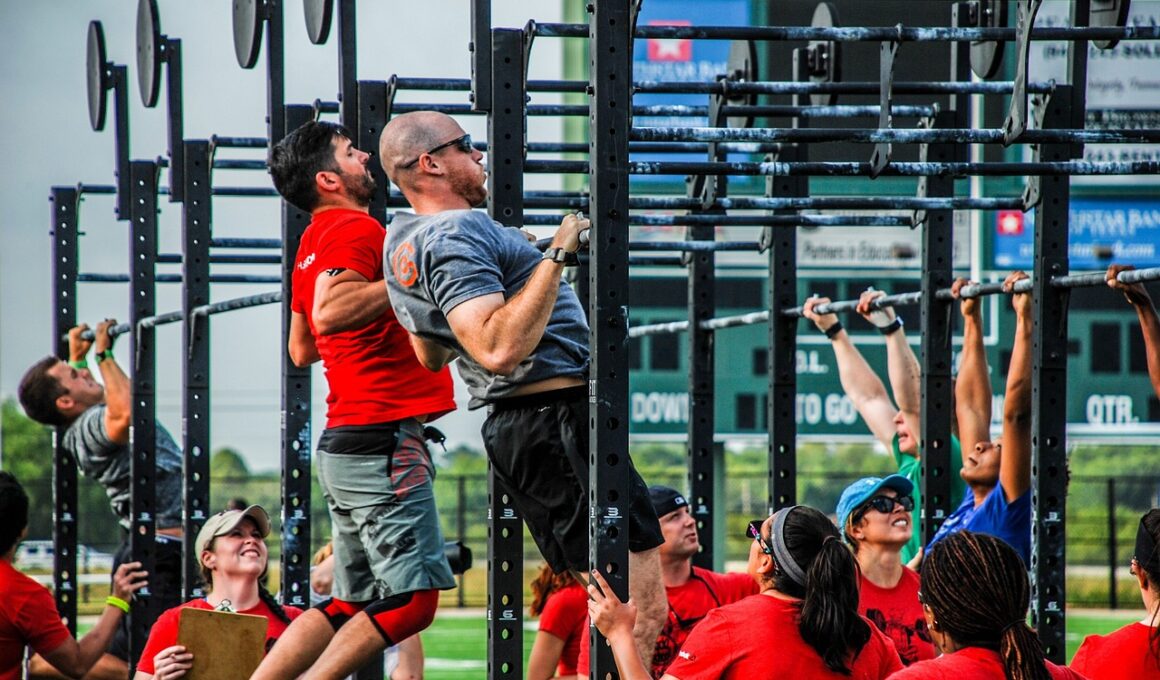Developing Your Own CrossFit Tracking Application: A Guide
Creating a CrossFit tracking application can greatly help athletes monitor their performance and progress. Start by identifying the core features your application must have, such as flexible workout tracking, performance metrics, and social sharing options. Given CrossFit’s diverse nature, the tracking capabilities should accommodate various exercises, including strength training, Olympic lifting, and endurance workouts. User engagement is crucial, so consider adding features that motivate users, like leaderboards or personal goal-setting. The design should be intuitive and user-friendly so users can easily navigate through the app without any confusion. Implementing a clean interface will enhance user satisfaction significantly, allowing athletes to focus on their workouts instead of the technical aspects of the application. You should also consider offline capabilities; many gyms and CrossFit locations might not have stable internet connections. Therefore, enabling users to log workouts without immediate internet access can be a valuable feature that differentiates your app from competitors. Finally, thoroughly test your application with real users to refine its functionality and optimize the experience for future users. Such diligent preparation can contribute immensely to the app’s success.
Next, prioritize selecting the right technology stack for your CrossFit tracking application. Frameworks like React Native, Flutter, or native development can be suitable options. Choose a stack that allows for scalability and maintainability, ensuring that future updates remain manageable. It’s essential to consider how your app will handle data storage; local databases like SQLite or cloud solutions can efficiently manage user information, performance data, and workout history. Security is another critical aspect, especially when dealing with personal information. Safeguard user data by implementing encryption and secure authentication measures to maintain trust. In addition to ensuring security, optimizing performance should be a priority. Users expect fast load times and seamless interactions, especially when tracking workouts. Therefore, thoroughly analyze and optimize queries and backend processes to achieve this level of speed. Don’t forget to implement analytics to gain insights into how users engage with the app. These insights can help inform future updates, keeping the app relevant and engaging over time. Utilizing feedback from user data can enhance user retention rates, ultimately improving the application’s success in the competitive fitness app market. A feedback loop will help you understand your audience better.
Designing a User-Friendly Interface
A user-friendly interface can set your CrossFit tracking application apart from others on the market. Prioritize simplicity in the design to ensure users can navigate easily and log their workouts intuitively. Conduct user research to identify the specific features and layout that users find most beneficial. This user-centric approach will guide you in creating a prototype that resonates with your target demographic. Focus on using appealing colors and fonts that match the dynamic nature of CrossFit while ensuring readability throughout the application. Consider how the application will display results and workouts; visual elements like graphs can help users understand their progress over time. Additionally, integrating customizable dashboards could empower users, allowing them to showcase what metrics matter most to them. Ensure that workout sessions can be logged quickly without excessive taps or swipes since users will often perform this task after an intense training session. Incorporate feedback mechanisms directly into the application for immediate suggestions on features. Accessibility features will also improve the usability of your app, ensuring that everyone, irrespective of fitness levels, can use your application effectively.
Integrating community features into your CrossFit tracking application can significantly enhance user engagement. CrossFit emphasizes community support and motivation, so including elements that foster this can promote user retention and loyalty. Implement features that allow users to connect with each other, share workout tips, and post accomplishments on social platforms. You could also provide options for users to join virtual classes and challenges, creating a sense of competition. This can motivate users to stay active and improve their performance consistently. Additionally, consider integrating a social media component that allows seamless sharing of workouts or achievements to foster a larger community presence. Utilizing gamification strategies—a method where elements of game design are applied in non-game contexts—can transform the workout experience into a more fun engagement. Rewarding users with badges or points for achieving fitness milestones can encourage continual use of the app and incentivize more effort in workouts. Moreover, hold regular competitions within the app, allowing users to showcase their progress and foster further camaraderie among CrossFit enthusiasts. This dynamic approach will surely enhance user satisfaction and repeat usage.
Testing and Launching Your App
Once development is complete, thoroughly testing your CrossFit tracking application is essential. Utilize both manual and automated testing techniques to ensure the app operates smoothly on all devices and platforms. Identify bugs or errors early in the process, which can save time and resources. Conduct user testing sessions with a sample of your target audience to gather feedback, identifying areas for improvement. This process can help refine the user experience, ensuring that everything from the interface to fitness tracking is effectively streamlined. Following rigorous testing, prepare for the application launch by developing a comprehensive marketing strategy. Utilize social media, influencer partnerships, and fitness communities to increase visibility and attract initial users. Providing early access or beta testing for selected users can create buzz and lead to enriched feedback for the final launch. Ensure your app listing is optimized with relevant keywords and compelling descriptions, focusing on its unique selling points. An effective launch can establish a solid user base from the get-go. Post-launch, continue monitoring analytics and feedback to implement updates and improvements, which can significantly benefit long-term success.
In addition to all technical aspects, establishing a revenue model is crucial for the longevity of your CrossFit tracking application. Several models can be considered, including freemium, subscription-based plans, or one-time purchases. Analyzing your target audience’s preferences will help you choose the right model that balances profitability and user satisfaction. Offering premium features or exclusive content could enhance the user experience while generating revenue. Be mindful of ensuring that the basic functionality remains robust and beneficial to users without charging to access essential features. You could also consider partnerships with fitness brands for affiliate marketing or sponsorship deals, leading to additional revenue streams. Non-intrusive advertisements can also provide a way to monetize while keeping the user experience intact. Ongoing assessment of the revenue model and making necessary adjustments will keep the application thriving in the competitive fitness market. Continuous improvement of both features and financial strategies will maximize profitability while fostering user engagement. Always remain attentive to emerging trends in the fitness tracking technology space to evolve your application accordingly.
Maintaining Customer Relationships
Establishing and maintaining strong customer relationships is vital for the ongoing success of your CrossFit tracking application. Engaging with your community fosters a sense of loyalty among users, encouraging them to choose your app over competitors. This can be achieved by providing consistent updates, effective customer support, and opportunities for user feedback. Implementing robust customer service channels, including FAQs, live chat, and email support, will help users resolve issues efficiently. Additionally, encouraging user-generated content, such as reviews and testimonials, can build trust within the community. Sharing success stories from your users can also enhance your brand’s visibility and promote a culture of achievement. Consider creating a newsletter to keep users informed about new features, tips for maximizing app usage, and upcoming challenges. Regular communication ensures users feel valued and connected. Evaluate user retention strategies regularly to keep track of engagement levels and identify possible drop-off points. Implementing regular improvements based on user feedback will demonstrate a commitment to customer satisfaction. Ultimately, nurturing these relationships can substantially influence your application’s reputation and market presence.
Create a marketing strategy that targets the CrossFit community effectively to grow your application’s user base. Engaging with influencers, CrossFit trainers, or fitness enthusiasts can enhance visibility and encourage sign-ups. These collaborations can provide leverage to showcase your app’s unique features and benefits effectively. Use social media platforms to create buzz about your application, highlighting user testimonials and workout successes. Regularly sharing engaging content, like fitness tips or motivational quotes, can help to build a community around your brand. Video tutorials or demo usage can further enhance understanding among potential users of your application. Consider organizing promotion challenges; these could involve users sharing their experiences or inviting friends to download the app, creating a virality loop. Paid advertising can also be a robust method to target specific audiences across multiple online channels. Track engagement metrics to assess which strategies are most effective and adjust them accordingly. Participating regularly in CrossFit events or communities will keep your brand at the forefront of target users’ minds. A compelling marketing strategy will be essential for continual growth and expansion, ultimately leading to your app’s success in a competitive landscape.


